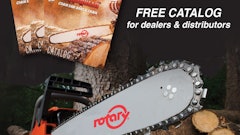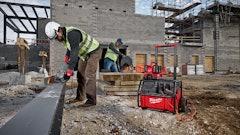One thing you need to continually do as a retailer is ask for feedback from your customers. You want to find out how your employees are doing, how your marketing is working, and how your overall customer service is being received. This information is vital to determining any improvements that need to be made in order for your dealership to become more competitive.
Three Methods for Gaining Customer Feedback
The challenge for most dealers is figuring out how to get that information. There are three basic methods. Method 1: Simply talk with customers when they are in the dealership. This is a quick and free method, but not so easy to execute when it’s the busy season. There is one other drawback: Customers may hold back on telling you the truth because they want to be nice and want to avoid any confrontation.
Method 2: Call the customer a few days after they’d visited your dealership. You can do this personally or just have an employee do it. I believe it’s better to have an employee do it because customers tend to go easy on the owner if they personally know that owner. Your office manager might be a good choice. If you’re a larger dealership with some money to spend, it might make sense to hire an outside consultant who specializes in this type of thing.
Method 3: You can mail or email the customer a questionnaire. If you want to go the email route, one popular and free online survey tool is surveymonkey.com.
How to Ask Questions What you want to do is create some questions based on a ranking system. For example, “On a scale of 1 to 10 (with 10 being excellent and 1 meaning you’d never do business with us again), how did you feel about the way you were treated the last time you came into our parts department?”
You also want to come up with some more specific yes/no questions. For instance, “Did we have the parts you needed?” “Were you greeted when you walked into our store?” “Were you thanked when you left?”
Another approach is to create some A-B-C multiple choice questions. For example, “Would you recommend us to your friends?” (yes, no, maybe).
Finally, I think it’s important to include at least a couple of open-ended questions that give the customer a chance to respond in his or her own words. For instance, “Is there anything else you’d like to share regarding your last experience with our service department that can help us do a better job of serving customers like you?”
What Questions to Ask
You obviously want to find out how customers feel about the way they were treated by your staff. But there are a whole host of other questions you can also ask.
The outside of our dealership is your biggest billboard, so you should ask the customer what his or her impression was. For instance, “On a scale of 1-5, how would you rate the appearance of our dealership as you drove into the parking lot?”
Then you move to the inside of the dealership. “How would you rate the appearance of our showroom?” Then more specifically, “How do you rate the appearance of our parts department?” “How would you rate the lighting in the showroom?” “How would you rate our showroom displays?” “How would you rate the cleanliness of our restrooms?” These types of questions are critical, because as busy dealers, these types of things often go unnoticed. You have to ask the customer how your dealership looks.
How to Structure Your Questionnaire
Anytime you’re doing a survey, you start by asking a broader question, and then build upon that by asking more specific subsequent questions. Take another look at the showroom appearance examples in the above paragraph. See how the line of questioning flows in a logical fashion? You definitely don’t want to confuse the customer by asking one question about overall dealership appearance and then follow that up by asking a question about the friendliness of service department staff.
Eventually you will have to shift gears from one area of the dealership to another. When you do, start that second line of questioning with another broad question. For instance, “What was your overall impression of our service department?” Then, “Was the service manager friendly and eager to assist you?” “How would you rate the appearance of our service department?” “How would you rate the appearance of our technicians?”
Aside from making it easier on the customer, the real benefit of asking groups of logically flowing questions like this is that you can pinpoint where you need to improve. For example, a customer’s overall impression of your showroom’s appearance might be a 3 out of 5. But as you review the responses to the subsequent questions, you note that everything scored at least 4 except for restroom cleanliness, which only scored 1. Now you know what to fix in order to create an even better customer experience.
Test Your Questions
It’s a good idea to send the survey out to just a few customers initially (maybe 10 or 15). Then look at their responses and see what you’re getting. There may be a question that isn’t being answered consistently. Maybe you need to rewrite the question so it makes more sense to the customer. Make any necessary changes now before you send the questionnaire out to your broader list of customers.
How to Act On the Responses You Get
Prepare yourself now—some of the responses could be less than favorable. Embrace it, because now you know what you have to improve in order to become a more competitive dealer who’s capable of earning customers for life.
Pull your key managers and staff together to go over the data. If you’re a 2 out of 5 on overall dealership appearance, what are you doing to do about it? How can you improve?
If you learned that you’re a 5 out of 5 on parts department friendliness, you have to give your parts staff credit; rewarding good behavior encourages additional good behavior.
Customer surveys aren’t just about hearing bad news and figuring out what you need to get better at. Customer surveys are about finding out what customers think of your dealership, both good and bad, and how you can continue to deliver a favorable customer experience, something that’s growing more important year after year.





























